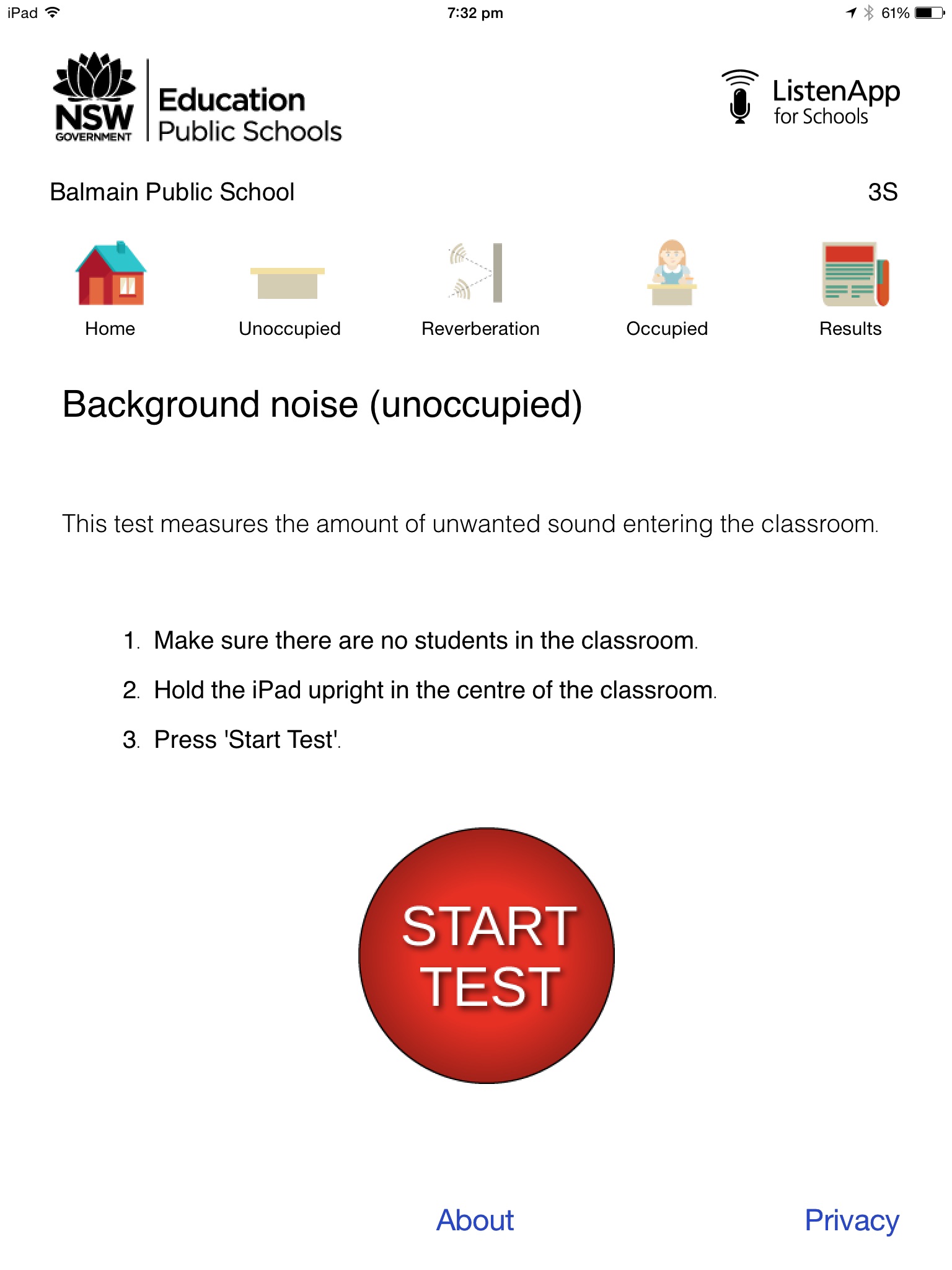
ListenApp for Schools app for iPhone and iPad
Developer: NSW Department of Education
First release : 06 Jul 2016
App size: 0 Bytes
ListenApp for Schools allows teachers to evaluate the acoustic properties of their classrooms. ListenApp for Schools can also provide information on how modifications to the classroom have improved a classroom’s acoustic properties.
Funding for this resource has been provided through a National Partnership agreement, More Support for Students with Disabilities, between the Commonwealth Government and the New South Wales Department of Education, Australia.
The resource has been jointly developed by the New South Wales Department of Education and Communities (DEC) Australia, Macquarie University (Audiology & the Institute of Early Childhood) Australia, and the National Acoustic Laboratories (NAL) Australia.
Features:
ListenApp estimates the speech transmission index (STI), which shows how clearly the students will be able to hear the teacher’s voice in the classroom.
ListenApp for Schools takes three measurements; (1) background noise levels without the students in the classroom (unoccupied), (2) reverberation time (the time taken for a loud sound to be significantly reduced), and (3) noise levels with the students in the classroom (occupied).
The output of each of these measures is provided numerically and visually. An indicator of how well the acoustics of the classroom conforms to *recommended values is provided, using a traffic light system; red = poor, amber = adequate, and green = good.
Where an amber or red light is shown, specific suggestions for improving the classroom acoustics are provided.
* The recommended values used in ListenApp for schools conform to (1) the building standards in Australia, which apply to classrooms, and (2) the guidelines for classrooms established by the Association of Australian Acoustical Consultants. The traffic light system is based on a review of National Standards and research papers from Australia and around the world. Note that poor acoustics are particularly problematic for children who have learning difficulties, hearing loss, English as an additional language / dialect, and other language factors. The recommended values do not take this into account, and there are no standards specific to this population.



